Spats, or spatterdashes, to give them their full name, are shoe accessories that sit on top of a pair of men’s dress shoes to keep them clean. Usually worn by the wealthy aristocracy, spats would button up underneath pants, with only the lower edge showing. A spat would sometimes have a stirrup that would sit underneath a shoe to hold the spat in place.
I’m a big fan of gangster movies, especially the old Capone-era movies where they dressed like aristocrats. It’s a great look from an era that oozes style and sophistication.
I’ve always thought I would look the business with a hat, suit, and dress shoes, complete with spats.
Everyone can picture the gangster look, but I get a blank stare when I mention how society needs more people wearing spats.
Once I’ve explained it’s that white sock thing over my dress shoes, recognition dawns. To spread the word a little further, I thought a good look at spatterdashes was in order.
After you read this article, do me a favor. The next time you’re off to a fancy dress party as Al Capone, you’ll know to ask, nay, demand, spats are included.
Table of Contents
What Are Spats?
Spats have been around since the 1800s and were initially worn as a protective cover for shoes.
It’s important to remember that roads were often strewn with rubbish, horse manure, and the day-to-day grime of the 18th century, so you can see why people looked for a simple fix to an annoying problem.
Spats come in various materials but are usually made from white linen or brown or grey felt that would be buttoned up at the side. Putting a spat on is as simple as rolling up your pant leg, placing the spat around your leg, buttoning it up, and then lowering it over your shoe.
Spats had become extremely popular by the beginning of the 19th century, especially once white linen spats were introduced.
A white spat would be worn with dress shoes to protect the gentleman about town from having dirty shoes; they looked incredibly smart, adding a touch of class to an outfit.
A Victorian-era boom saw the ranks of the rich and famous swell, and the inevitable balls, shows, and nights on the town meant dressing up was necessary. In the same way influencers and film stars of today influence what people wear, the famous of the day, notably King George V of England, was seen wearing spats, so spat sales boomed.
By the end of the 1920s, spats had fallen out of favor—many of the young men of the era had gone to war and not returned. Fashion had become more relaxed as the stiff, formal Victorian age came to a close.
It’s reported that in 1926, when King George V of England was seen out at the Chelsea Flower Show without his spats, within the hour, there were hundreds of discarded spats lying hidden under bushes.
What Was the Purpose of Spats?
The original purpose of spats was to act as a protective cover for shoes, and they were widely used by both civilian and military men of a certain pedigree. For officers in the military, wearing felt spats over their boots not only kept their footwear clean but also kept out muck and debris.
Over time, spats would become more fashion orientated as white linen spats would be worn over the top of dress shoes. The white linen would keep smart dress shoes clean, but, just as importantly, the bright white color would stand out, making the spats as much a declaration of fashionability and wealth.
Spats also work well when you’re doing particularly dirty jobs outdoors, and the brown or grey felt commonly used to make spats would keep out water, dirt, and any other unpleasant garbage that could be found on the streets of the 18th and 19th centuries.
Some, but not all, spats will have a stirrup that goes under your shoe and sits next to the heel. The stirrup, which can be seen on the DSI Snap Spat, adds an extra layer of stability to the spat and will stop it from spinning around on top of your foot.
Sports spats are designed to keep you on the move without having to worry about getting stones or mud inside your soccer cleats or running shoes. A sports cleat pulls on much like an elasticated sock or ankle brace but also accommodates your footwear.
Some, but not all, spats will have a stirrup that goes under your shoe and sits next to the heel. The stirrup on the Snap Spat adds an extra layer of stability to the spat and will stop it from spinning around on top of your foot.
The Golden Era of Spats
The popularity of spats began to wane by the end of the roaring 20s, though the 1920s is probably the decade that made spats more famous than any other era.
From movies to photographs, we can see spats everywhere, from the high society gentlemen out on the town to the 1920s gangsters who embraced spats as a sign of their own wealth and decadence.
Everyone from film stars to Chicago gangsters could be seen wearing white spats as part of their wardrobe. With musicals, broadway shows, and dancing being so popular, wearing spats drew the eye to people’s feet.
Spats are a perfect accompaniment to dance shoes, which is why they’re still worn today as dancers add that extra spark to their routines.
What Shoes Do You Wear with Spats?
You can wear spats with several different styles of shoes, ranging from a smart pair of dress shoes to a pair of work boots. Even soccer cleats can have spats on them to keep out debris while playing soccer.
For a classic 1920s look, you’ll need dress shoes and linen or wool spats. Smiffy’s Spats are the more traditional-looking spat and would go well with your dress shoes.
For a classic 1920s look, you’ll need dress shoes and linen or wool spats. The Smiffy's Spats are the more traditional-looking spat and would go well with your dress shoes.
White spats would go very well with Oxfords like these from Anthony Veer, as the smooth, full leather upper contrasts well with a white spat.
This handsome cap toe Oxford is an Anthony Veer best seller and offers a lot of value for the price with its Goodyear welted construction, high quality leather detailing, and stylish profile.
If you work in a job with heat or sparks, such as welding, you should consider wearing a leather spat to prevent hot sparks or molten metal from getting inside your boots. A knee-length welding spat like this one from Senvitate will keep your feet and ankles safe without restricting your movement.
This premium quality protective shoe cover from Senvitate ensures the safety of your expensive shoes and your calves from sparks while you work.
With hardwearing leather spats, the type of shoe or boot you wear is pretty much irrelevant, and you’ll be able to wear your normal work boots. With linen spats that are designed for more formal wear, you can get spats of varying colors, with white being the most traditional.
There’s nothing spotting you reversing the color scheme and having black spats over a pair of white dress shoes. A pair of Bates Lites Oxfords with white pants would contract with a black spat and really make an impression.
Uniform shoes done right. Bates Lites Oxfords bring Goodyear welted construction for ultimate longevity and protection and a breathable moisture wicking lining for on-your-feet comfort.
You can even forego the spats altogether and buy a pair of shoes that simulate the two-tone color of a dress shoe with spats, such as the Modello Capones. If you’re into jazz dancing or just love the classic look that these shoes bring, it’s an alternative to consider.
If you’re into jazz dancing or just love the classic look that these shoes bring, they're a worthy alternative to consider.
Where to Find Shoe Spats Now
Despite not being anywhere near as popular as they should be (I’m still outraged that the trilby hat isn’t compulsory), you can still find several retailers that sell spats of various colors and designs.
Most spats are of a one size fits all variety; they’ll button up over your ankle and then drop over your shoes with minimal fuss.
If it’s a formal occasion where you’re really dressing to look the part, then the DSI Snap Spats are ideal. The black elastic stirrup straps that go underneath your shoe will keep the spat in place, and the wipe-clean material will keep these spats looking bright for years.
If you’re planning on wearing spats every day for the rest of your life, then $180 isn’t unreasonable. If they’re for a one-off fancy dress party, perhaps not.
Conclusion
While spats aren’t popular like they were back in the day, if you’re picking up something simple for a party, you can’t go wrong with the DSI Snap Spat.
It sits well, has a stirrup to hold it in place, and for a reasonable price, you can dress like Al Capone for the evening. Spats will highlight tap-dancing skills if you’re planning to take your spouse dancing.
Some, but not all, spats will have a stirrup that goes under your shoe and sits next to the heel. The stirrup on the Snap Spat adds an extra layer of stability to the spat and will stop it from spinning around on top of your foot.
FAQs
Did gangsters wear spats?
There are hundreds of available pictures of gangsters wearing spats, including Al Capone, who can be seen wearing black dress shoes with white spats. Many gangster movies depicting the Capone era also have the stars of the films wearing spats. There are many instances of bootleggers and gangsters wearing two-tone shoes, which have a similar look to them.
What was the purpose of spats on shoes?
Before they became a fashion accessory, specifically an accessory of the wealthy, the primary purpose of spats was to keep shoes and boots clean and to prevent debris from getting inside them. With white linen or fabric spats, the emphasis was less on cleanliness and more on looking smart. In the late 1800s and early 19th century, spats were considered daily wear by the wealthy elite.
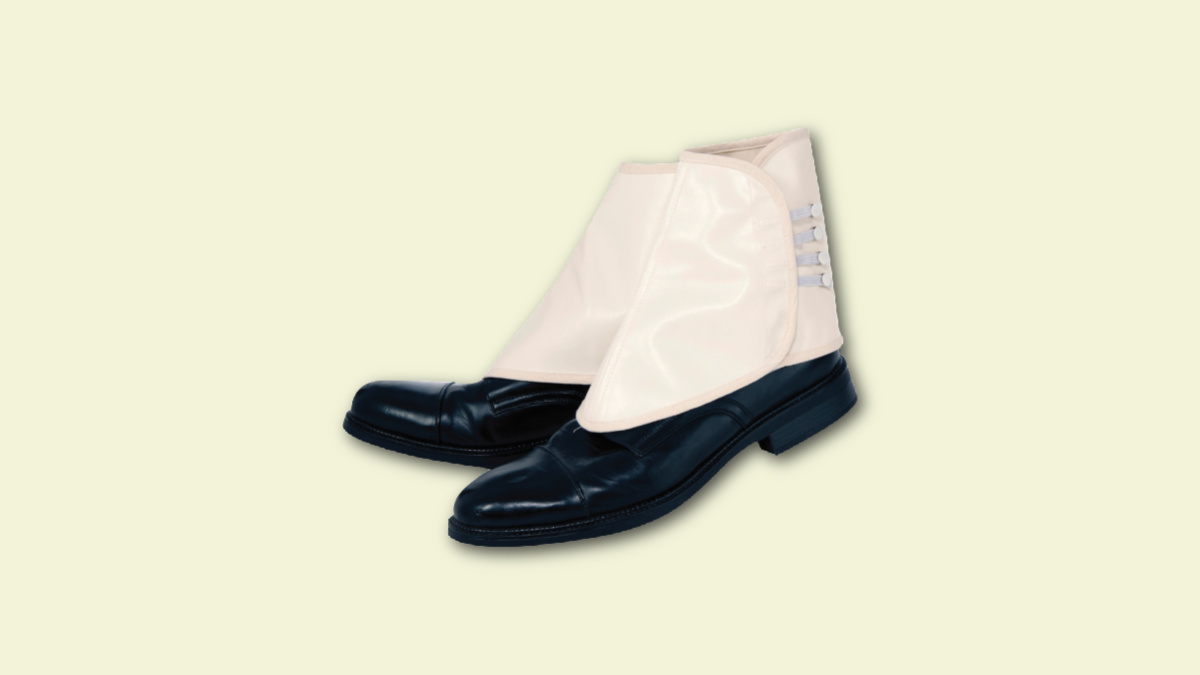
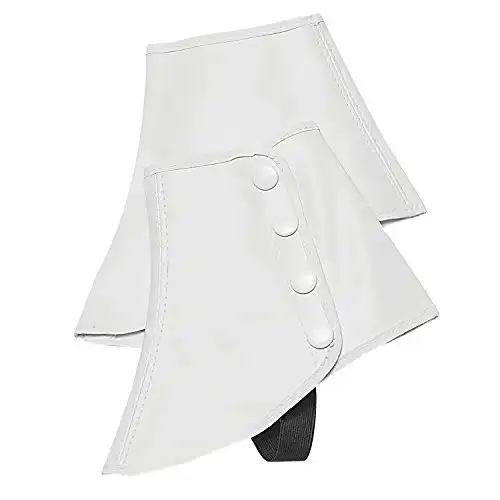
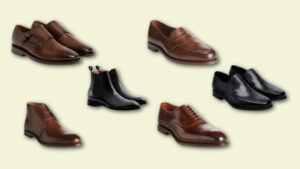
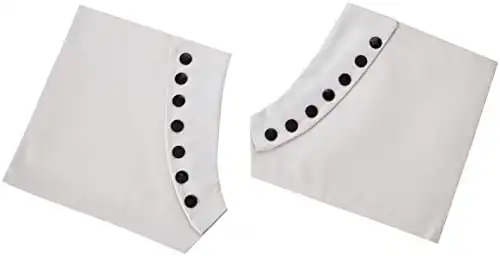
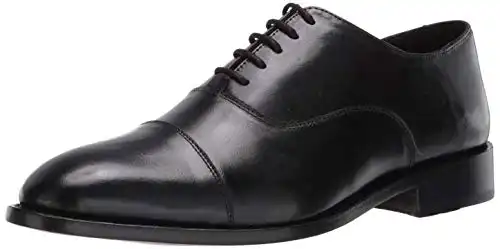
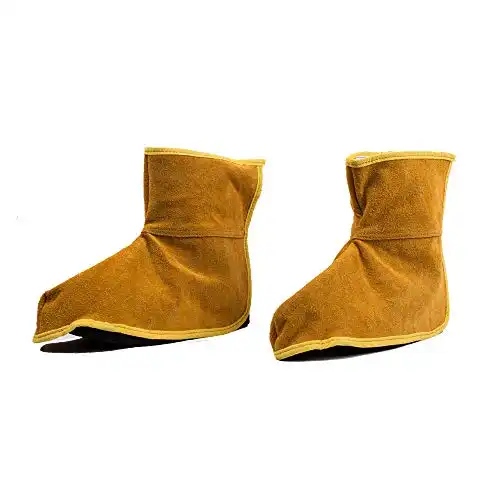
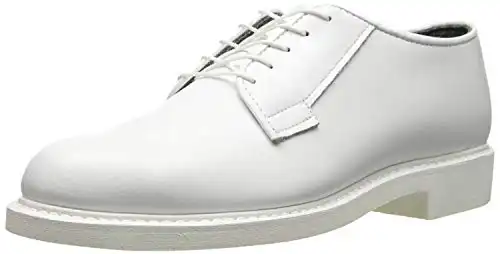
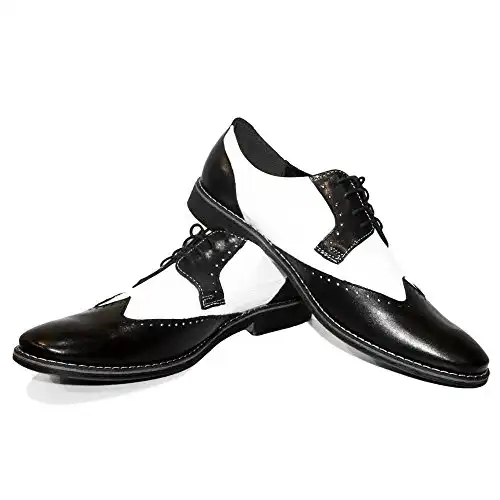

Join the Discussion